It was the late summer of 2009 and from my uncles 'cellar,
Vini Sultana , all' dusk, I watched the vineyard and the olive grove planted long ago by my far-sighted grandfather. There the sunsets are quite bewitching, perhaps due to the softness of the hills and the countryside of Pachino, perhaps due to the ancient charm of the ruins of old farmhouses, perhaps due to the relaxing permanence of the Iblei in the distance. And there, probably also influenced by the many wonderful years spent in scouting, I thought I saw tents among the olive trees. No, it was not about any abusive camper but simply of my galloping imagination in the throes of having to combine something for my future subsistence ... I was in fact completing my course of study in philosophy and soon I could have the title of Doctor Magistrale in Contemporary Philosophy, degree theoretically "qualifying" for teaching. Except for then to discover (but it was already in the air for some time) that they were joking: you should still have access to the Active Training Internship, ie the replacement of the old Schools of Specialization for Teaching that should have been, in fact, replaced by the Degrees Magistral. Today my determined former university colleagues discover, at the age of forty, that the joke continues, because today the (expensive) achievement of the TFA would seem to have no value. At the time, I sniffed in time that something did not square, therefore, between the study of Heiddeger and Searle, it began to flash more and more often in my mind that I should look for an alternative to the idea of seeing myself in the near future of hopeful students in a high school classroom.

So I decided to try to set up
a campsite among the olive trees of my grandfather . Only that land and the one next to that I would later purchased, of course with the money of dad, were and remain agricultural: so I would first have to set up a farm with all the necessary structural and professional requirements (fortunately I had already behind the 'experience of a couple of harvests ...), and then request an agrituristico clearance to the Provincial Inspectorate of Agriculture thanks to which the City of Noto would have issued me the authorizations necessary for its realization. Simple, no? I thought so too...
Those were also the rampant years of the famous Rural Development Plan 2007-2013, subsequent to the golden age of abuse and waste of previous donations of European funds: people who required funds for an agricultural warehouse but that ended up "financing" the construction of the mega luxury house long desired or "young entrepreneurs" who invested the several tens of thousands of euros fell from the European sky to run around on a flaming Mercedes. Controls on costs, on the part of Europe, (rightly) became more capillary and therefore it was no longer easy to see the coveted lost funding. Although I had all the papers in order, it was added the decisive factor
"freezing of European funds" (so hermetically defined by the experts) because of "delays and bureaucratic errors" by the staff in charge of the Sicily Region. In the end, in relation to that RDP, the sums paid were, due to certain "bureaucratic problems", a negligible percentage compared to what was granted by Mamma Europa. It is therefore surprising that the former President of the suppressed Province of Syracuse, Nicola Bono, presented to the Court of Auditors requesting an investigation relating to
200 million euro disappeared into thin air ... Moral of the story? I have lost years of time waiting for these funds to "unblock" (no agronomist, technician or regional official was able to define what would still have to wait). So thanks to Dad, the Italian Army General fresh fresh retirement, I was able to continue independently in the implementation of the project, regardless of the PSR "frozen". If between the lines should not strangely be found, without the money of dad I would not have concluded anything.
After
five years of bureaucracy , between confusion over the temporal versions of the laws of reference, offices poorly updated and not accustomed to the use of information technology, references of responsibility between non-communicating bodies, I finally managed to have an unexpected amount of "cards" in hand to allow me to sleep almost serene. Yes, because still, after seven years, I would not mind inserting another pair of pieces to the mosaic of the authorizations. In an agricamping even selling a coffee to a guest is not a trivial matter: you should theoretically have coffee plantations.

Initially I considered the agricultural frame, within which I was forced to stay to deal with receptivity, a ball at the foot because of the many limitations. In reality it turned out to be a lifeline, because
the agricultural tax regime concerns a series of facilitations and possibilities that in my case have proved absolutely vital. For details I refer you to the advice of many good accountants ... The first five years are said to correspond to the crucial period that determines the survival or failure of an activity similar to mine: I managed to stay afloat thanks to exceptional contingencies, such as the essential support and economic contribution from my family members, which allowed me to re-invest almost entirely the annual proceeds of the business. I would not swear that with my only "skill" I would be able to grow and give strength to my business. The reality is that I was and remain a privileged social.
My collaborators have always been trusted friends: in other words, there has never been a single euro left. Between us there has always been a relationship of extreme trust, among peers:
I have never looked for "employees" but "members of fact" . This climate has allowed us to optimize the available economic resources, to agree on investments and to establish with serenity how much and how to compensate them. My commitment would have been to continue to invest in the business, because with a bigger cake the portions would have grown for everyone. If this "trust" and complicity were lacking and we had exclusively applied the logic of our immediate and selfish usefulness, without disposition to small sacrifices and opportune compromises,
the fiscal costs would not have been sustainable and compatible with the growth of the activity . And I am not referring to irregular assumptions or illegal employment, simply to the flexibility in this regard that the agricultural tax system allows.
Obviously the company does not have the economic strength to guarantee them an annual salary, being a seasonal activity, but the path is traced...

Hand in hand, even considering the natural position in the agricultural tax regime, if there were also one of the contingent conditions that occurred after the initial investment, the best forecast that could have been achieved is an annual insufficient profit to guarantee investments of substance (unless you are in debt, trying your luck), yet adequate to support a single seasonal intake. In other words, no growth would have been impossible.
Fortunately, today the real economic potential of the company is very different, but the daughter of riskier choices at least and of small contributions of "corrective capital", after initial investment, not strictly resulting from entrepreneurial activity. The business continues to develop because it is economically sound and consequential factors such as a higher inflow of guests resulting from increased supply and increasing reputation gained (through online reviews, but this is another story of love and hate that I will be pleased to tell you in another occasion) are coupled with the fundamental contribution of the "human capital", that is, of the beautiful people with whom I have been surrounded, the true engine of the Agingamp Sophia.
If it is real the will of the Italian State to find a solution to the long employment crisis that grips our unhappy times, I am convinced it is necessary to facilitate the emergence of new businesses and really allow them to grow without getting sticks in the wheels from the same State . In these first seven years of activity I can boast of having given a breath of oxygen to a dozen people, then families. Certainly I have not radically changed his life, but together we have laid a solid foundation or, badly that I go,
tested a working method . A new business similar to mine, for the first five years of life should not waste too much time and energy to chase a complicated bureaucracy, but think only to pay more than adequately their "employees" and reinvest a good percentage of turnover in order to improve and implement the conditions for their growth. These companies, even more so if they started a bank loan to begin with, should therefore be
totally tax free (no tax, no tax, no withholding tax) for the first five years , provided they hire staff and continue to invest. From the sixth year, if everything went according to plan, the company on duty would have no difficulty in starting to pay the State the due, which would thus find itself with much more substantial income deriving from a solid company and with some unemployed in less among its own citizens. Instead of the hen tomorrow, today the state is satisfied with the potentially potentially rotten egg.
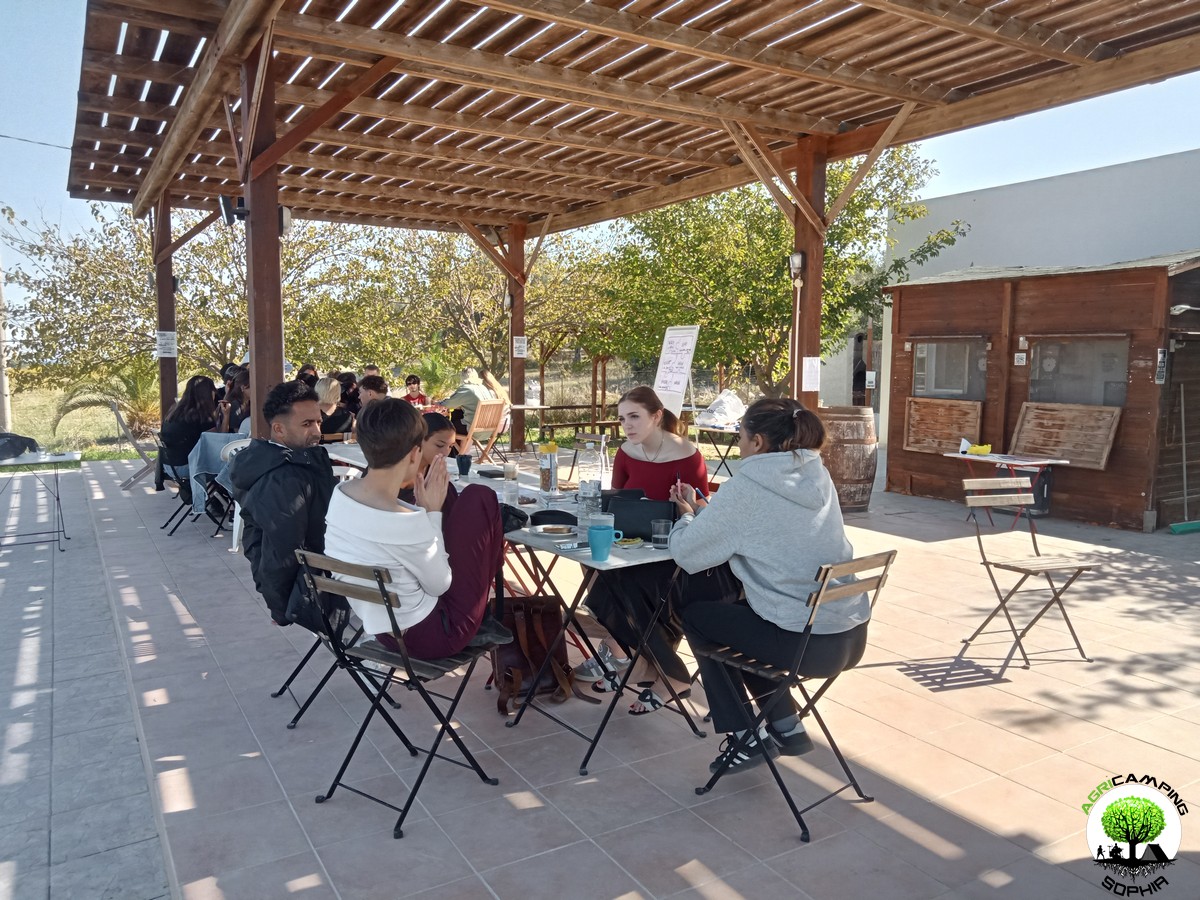 DO YOU WANT TO ORGANIZE AN ERASMUS AT AGRICAMPING SOPHIA?
DO YOU WANT TO ORGANIZE AN ERASMUS AT AGRICAMPING SOPHIA?
WHAT IS AGRICAMPING SOPHIA?
It is a campsite with tent pitches, glamping tents, mobile homes and bungalows
WHERE IS IT?
In Italy, in Sicily, near Syracuse, in Pachino: 36.736883, 15.095610
HOW TO CONTACT US?
info@agricampingsophia.it
(SPEAK ENGLISH) +39 3473079242 – (ONLY SPEAK ITALIAN) +39 3452396095
WHAT DO WE OFFER?
We offer hospitality and catering for Erasmus projects
FOR HOW MANY PEOPLE?
We can have 4-7 single beds in the Socrate Bungalow, 6-10 single beds in the Platone Mobile Homes, 4-6 single beds in the Aristotele Mobile Homes, 4 single beds in the Iblone Mobile Homes, 4 single beds in the single beds in the Empedocle Glamping Tents. In total we therefore have 18 comfortable single places or 31 single places with a fair spirit of adaptation.
IN WHICH PERIOD CAN AGRICAMPING SOPHIA BE AVAILABLE?
The most suitable periods to use our services...
 CART RUTS MODELED ON SOFT ROCK?
CART RUTS MODELED ON SOFT ROCK?
Read also RACK OR HOUSING FOR CLOGS?
Some cart ruts from the Targia district, in Syracuse, and most of the cart ruts from Granatari Vecchi, in Rosolini, give the impression of having been impressed, modelled, on a rock that was originally viscous, not entirely solid. As absurd as this hypothesis may seem, especially in Granatari Vecchi, the softness of the shapes and the at least anomalous uniformity of the rock bank, as if it were a concrete casting, which hosts the cart ruts, is unicum compared to the lithic context in the area.
In Targia this phenomenon is less impressive but if we consider the cart ruts essentially cart tracks, therefore furrowed roads indirectly resulting from the repeated passage of carts along the same route, we do not understand why such uniformity and smoothness is present, in the majority of cases, also on the parts not affected by the passage of the...
 RACK OR HOUSING FOR CLOGS?
RACK OR HOUSING FOR CLOGS?
Read also CART RUTS CUT FROM QUARRIES
In the presence of slopes, even slight ones, in some cart ruts in the Targia district, in Syracuse, central holes are found with a diameter of between 30 and 50 centimeters and a depth of 15-20 centimeters, spaced about 50 centimeters apart. Neither the position (they are not exactly in the center of the cart ruts and perfectly aligned with each other), nor the shape appear perfectly regular: either the passage of time and any wear have profoundly modified their original shape or, simply, they have never had a systematic regularity. However, the offset in position between one hole and another is never completely “off-axis”: there is always a portion about twenty centimeters wide that coincides with the same portion of the previous and subsequent hole. The best preserved and most defined holes are found in the cart ruts usually called Scala...
 CART RUTS CUT FROM QUARRIES
CART RUTS CUT FROM QUARRIES
Back to CART RUTS AND A FEW TOO MANY PROJECTIONS
I will skip any preamble, referring to what has already been written regarding the presence of cart ruts in south-eastern Sicily.
The easy academic tendency has been, in most cases concerning cart ruts, to consider them in terms of the latomie, or quarries, with which very often (for example in the cases of the Targia or Pizzuta districts) they share the same territory.
According to this theory, the carraie would have been indirectly created due to the wear of the rock at each passage of carts or sleds loaded with extracted stone blocks. I will not repeat the arguments presented so far in order to demonstrate that this is a theory that has little solid foundations on an in-depth analysis of the cart ruts. However, I will add a piece by demonstrating the implausibility of a connection between them in both chronological and functional...
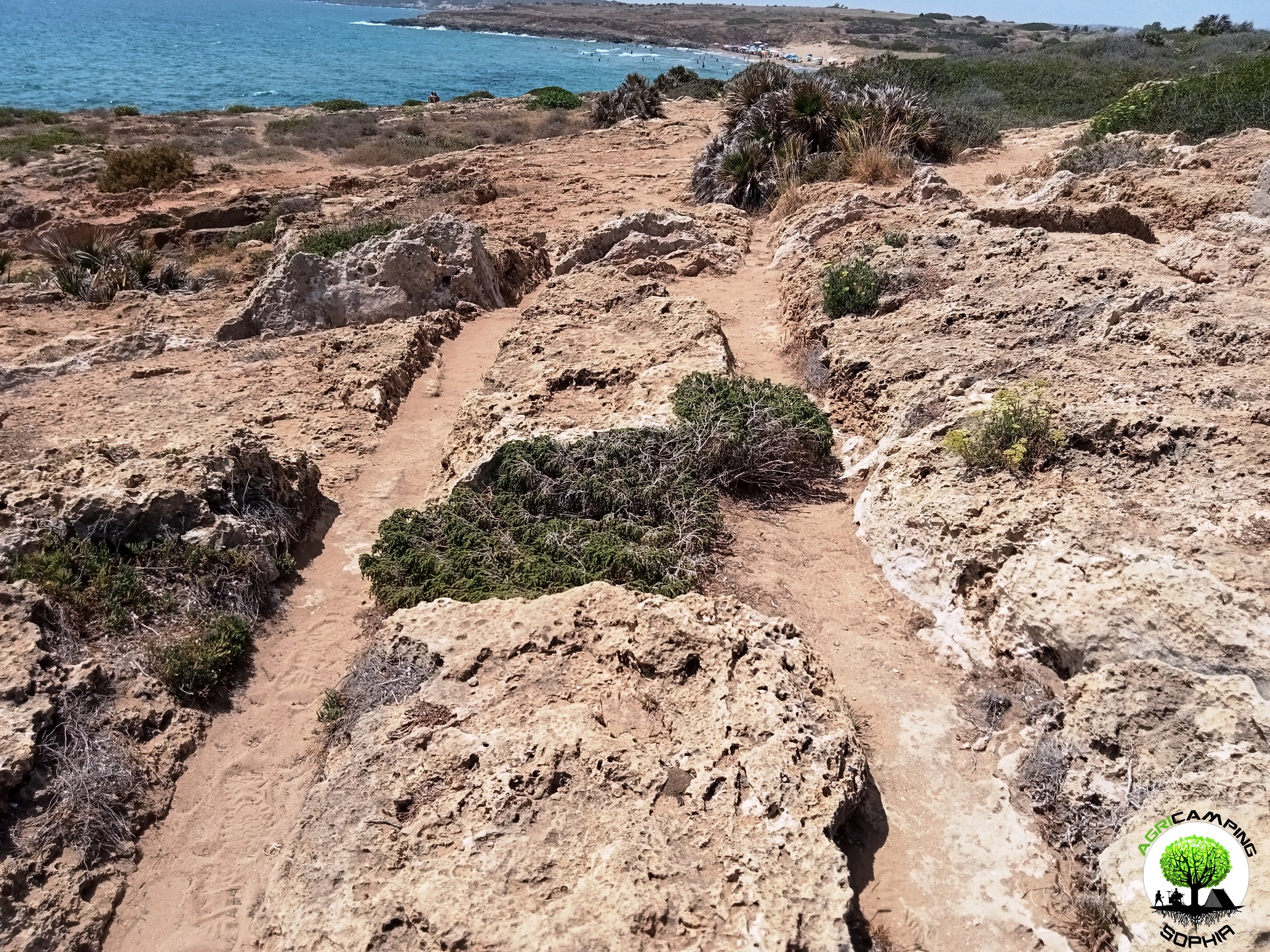 CART RUTS AND A FEW TOO MANY PROJECTIONS
CART RUTS AND A FEW TOO MANY PROJECTIONS
Read also THE POLISHING OF THE CART RUTS
I will skip any preamble, referring to to what has already been written regarding the presence of cart ruts in south-eastern Sicily.Considering the possibility that the cart ruts were gradually dug by the passage of carts pulled by pack animals, for example pairs of oxen, observing certain sections of the cart ruts present in the Granatari Vecchi district, in Rosolini, and in the Pizzuta district, close to the Vendicari Reserve, two questions arise:
1. Why force the animals to pass over rough surfaces and protrusions high, compared to the base of the furrows, even 60-70 centimeters?
2. Why, in the presence of such obstacles, not opt for a detour?
For Mottershead, Pearson and Schaefer such protrusions appeared later, since at the time of the passage of the wagons, a layer of earth covered the rocky bank, thus not making the obstacle...
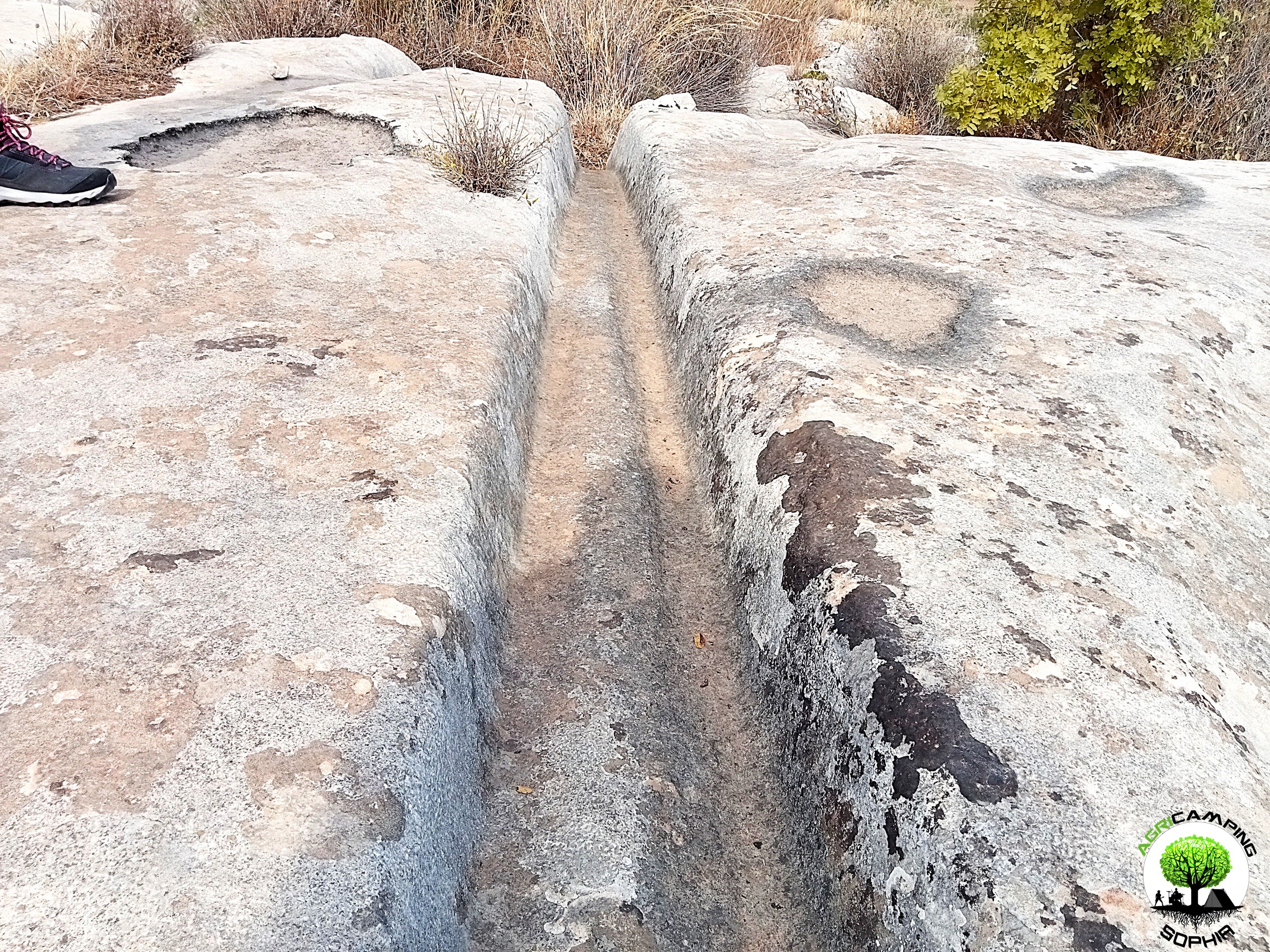 THE POLISHING OF THE CART RUTS
THE POLISHING OF THE CART RUTS
Read also THE PROBLEMATIC EDGES OF THE CART RUTS
I will skip any preamble, referring to to what has already been written regarding the presence of cart ruts in south-eastern Sicily.
To proceed with this comparison I have chosen a probable capital and the corner of a recess present in a block of the northern walls of Eloro that would seem to resemble a pinax, that is, a niche that would have housed a fresco of the heroa, but which a more careful observation refers to a system functional to the grip of the block through a pincer winch. Both elements, like the curt ruts, have remained at the mercy of the elements for millennia, and are therefore subject to comparable wear and tear due to the passage of time. The finishing of the capital should be of a high standard, since it is an architectural element that also has an aesthetic function. The recess, on the other hand, should have...
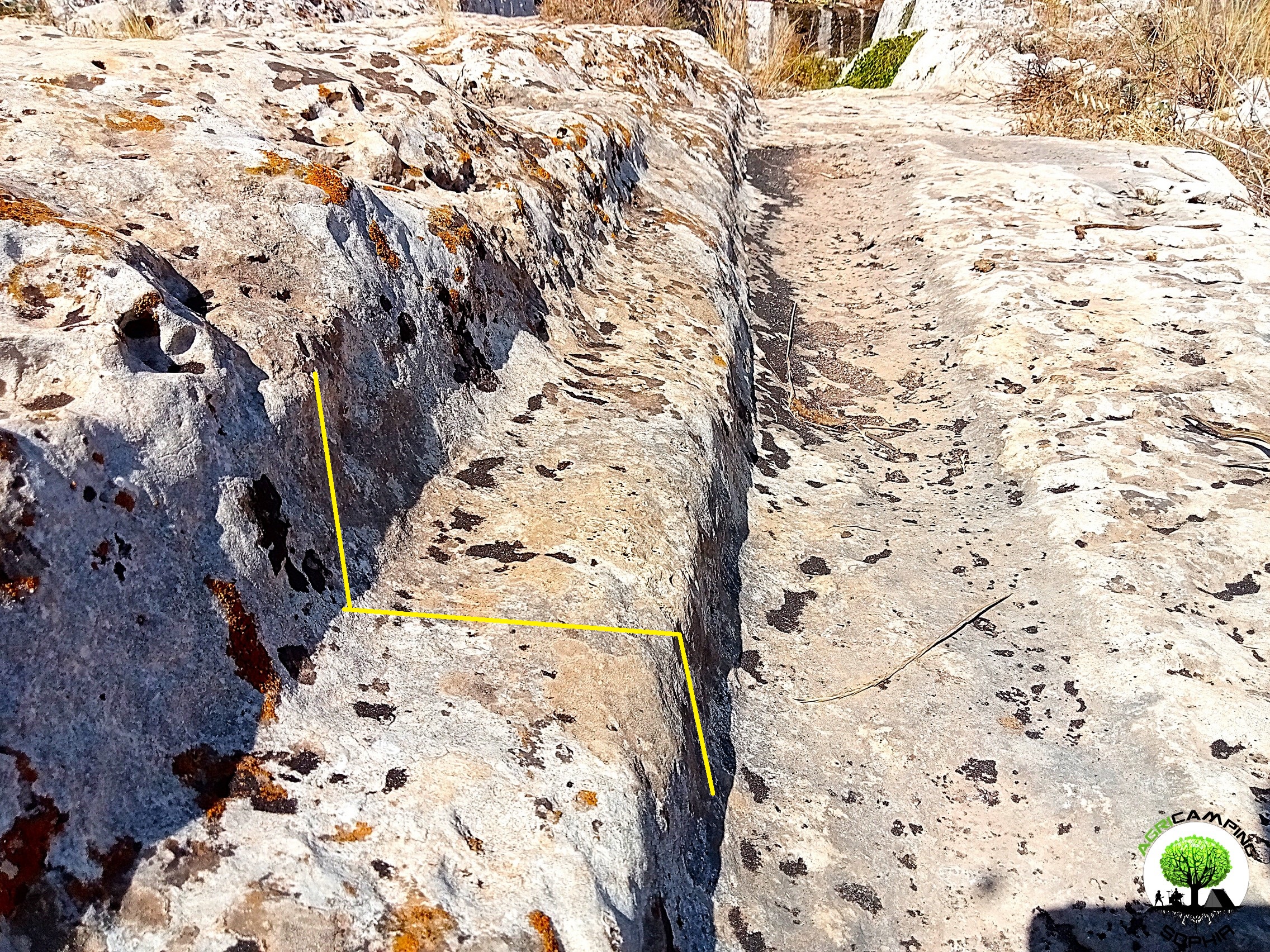 THE PROBLEMATIC EDGES OF THE CART RUTS
THE PROBLEMATIC EDGES OF THE CART RUTS
I will skip any preamble, referring to to what has already been written regarding the presence of cart ruts in south-eastern Sicily.As can be seen in other sites around the world, in some cart ruts I visited, in particular in the Cugni district in Pachino, in the Granati Vecchi district in Rosolini and in the Targia district in Syracuse, a clear border can be seen, a sort of frame, next to the grooves, more marked externally, barely noticeable internally.
The borders I measured have a width of 14-20 centimeters and a height of 8-10 centimeters.
Not all cart ruts have such frames present or particularly evident, regardless of the degree of wear or degradation. They are found above all in cart ruts with less deep grooves.
As already described in detail, given the presence of furrows with a depth of even 65-70 centimeters, the wheels of a possible vehicle would have had to have a...
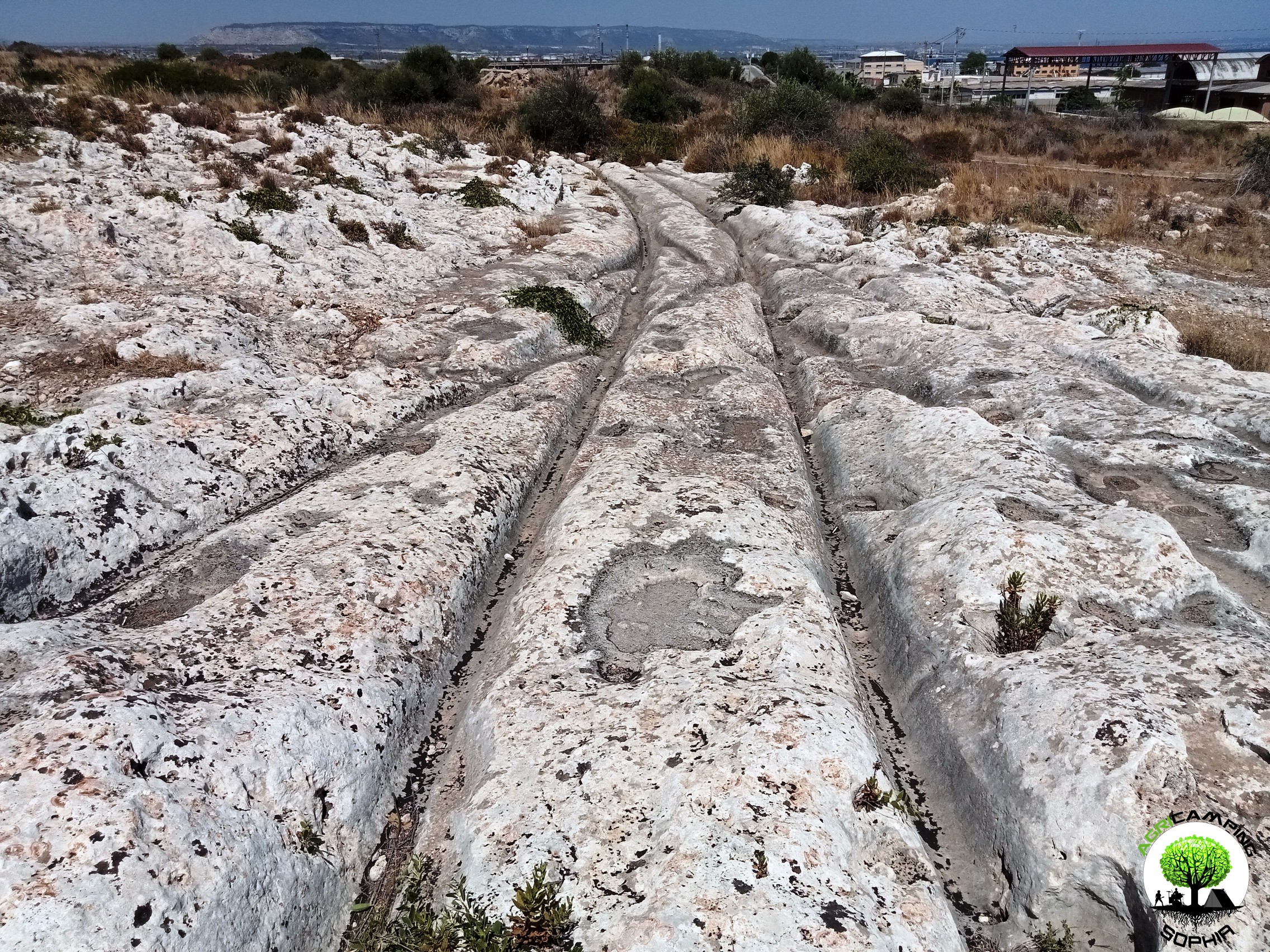 THE PROBLEM OF CART RUTS IN SOUTH-EASTERN SICILY (PART FOUR)
THE PROBLEM OF CART RUTS IN SOUTH-EASTERN SICILY (PART FOUR)
Click here to return to third part
Clapham Junction
As in the Maltese site Misrah Ghar Il-Kbir, also in the Targia and Granatari Vecchi districts the cart ruts intersect and cross each other in a similar way to the track switches in a railway station. The nickname Clapham Junction that was given by David H. Trump to the Maltese site, derives precisely from the similarity with the famous English railway station. For Sagona these are agricultural furrows and water channels, for Mottershead, Pearson and Schaefer these are abandoned paths due to obstacles and wear. Obviously we do not know what the morphology of the Syracuse and Rosolini territory was at times when the cart ruts were traced, but considering the current context, there certainly would have been no agricultural reason to build them, given the presence of fertile land, springs and fresh water courses just a few kilometers...





 DO YOU WANT TO ORGANIZE AN ERASMUS AT AGRICAMPING SOPHIA?
DO YOU WANT TO ORGANIZE AN ERASMUS AT AGRICAMPING SOPHIA? CART RUTS MODELED ON SOFT ROCK?
CART RUTS MODELED ON SOFT ROCK? RACK OR HOUSING FOR CLOGS?
RACK OR HOUSING FOR CLOGS? CART RUTS CUT FROM QUARRIES
CART RUTS CUT FROM QUARRIES CART RUTS AND A FEW TOO MANY PROJECTIONS
CART RUTS AND A FEW TOO MANY PROJECTIONS THE POLISHING OF THE CART RUTS
THE POLISHING OF THE CART RUTS THE PROBLEMATIC EDGES OF THE CART RUTS
THE PROBLEMATIC EDGES OF THE CART RUTS THE PROBLEM OF CART RUTS IN SOUTH-EASTERN SICILY (PART FOUR)
THE PROBLEM OF CART RUTS IN SOUTH-EASTERN SICILY (PART FOUR)